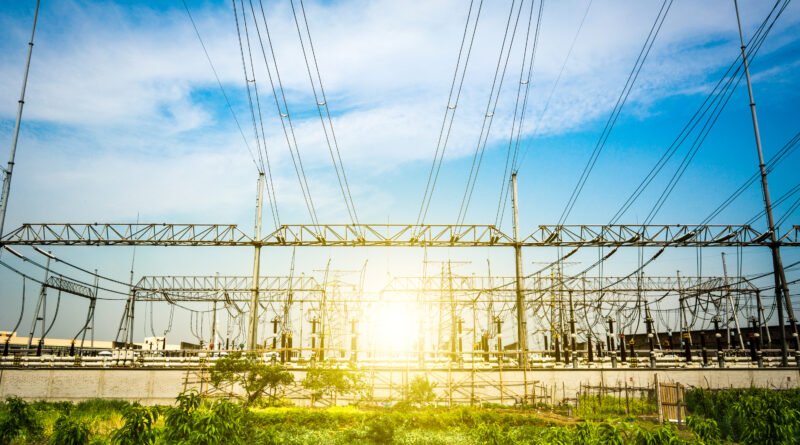Cisco Develops Customized Switch to Bolster Ukraine’s Grid Security Amid Russian Cyberthreats
Cisco Develops Customized Switch to Bolster Ukraine’s Grid Security and has shipped to Ukrenergo, Ukraine’s state-owned electricity grid operator, to fortify its defenses against Russian cyberattacks aiming to disrupt energy infrastructure.
Russian interference using GPS-jamming tactics has targeted Ukraine’s high-voltage energy subsystems, which have faced destruction from drones and missiles amid the ongoing conflict. These attacks have disrupted grid operators’ ability to assess damage and maintain power balance.
Ukrenergo’s reliance on GPS for time synchronization in substations is critical for grid security. Cisco highlighted that industrial control systems often depend on GPS due to its accuracy and cost-effectiveness.
The primary aim of Russia’s jamming activity is to disrupt missile guidance systems, inadvertently affecting grid operations. Interruption in GPS signals hampers time synchronization for electricity subsystems, leading to inaccurate grid status reporting and hindering power distribution during substation attacks.
While atomic clocks offer reliable time synchronization, they are expensive, especially for a nation dealing with a prolonged conflict like Ukraine. In response, Cisco engineered a solution by modifying their equipment to ensure accurate timekeeping, even amidst Russia’s radio jamming.
Using their Industrial Ethernet switch with an internal crystal oscillator, Cisco enhanced clock recovery algorithms and adapted switch code to maintain accurate time when GPS signals are unavailable.
After rigorous testing in their Austin lab, Cisco shipped modified versions of their Industrial Ethernet 5000 series switches to Ukrenergo, a venture costing around $1 million, reported by CNN. However, Cisco provided the equipment free of charge.
Facilitated by the Pentagon, the package was transported to Ukraine via the US Air Force, coordinated by the Department of Energy, with support from the Department of Commerce arranging meetings between US tech experts and Ukrenergo.
Illia Vitiuk, head of cybersecurity for the Ukrainian security service SBU, anticipates ongoing cyberattacks through the winter. Cisco assured that their devices underwent testing for reliable timekeeping in Ukraine’s extreme temperatures, which can plummet to -20°C/-4°F.
The development of clock recovery algorithms in Austin, coupled with successful testing in Ukraine, demonstrated the switches’ resilience in supporting the designated equipment stack.
Also Read About
New carbon material sets energy-storage record, likely to advance supercapacitors
Russia hammers Ukraine’s infrastructure
Since the war ignited in 2022, Russia has unmistakably signaled its intent to wage a kinetic conflict with Ukraine on both physical and virtual battlegrounds.
This war has been marked as one of the first in history fought simultaneously on the ground and in cyberspace. Russia initiated this hybrid warfare with a series of devastating wiper attacks using the WhisperGate malware, aiming at numerous Ukrainian public and private networks.
One notably disruptive incident occurred when these attacks spilled over, causing a significant outage at the satellite broadband provider Viasat. The repercussions extended beyond Ukraine’s borders. Although the attack was attributed to Russia months later, the infosec community had a strong inkling of its origins from the outset.
This assault on critical infrastructure was not an isolated incident. In the past year, a coordinated onslaught on Ukraine’s power plants, orchestrated by attackers associated with Sandworm, the offensive cyber unit within Russia’s intelligence agency, resulted in widespread blackouts across the country.
Cisco’s initial meeting
A meeting held at a Stanford steakhouse in February sparked Cisco’s initiative to develop hardware countering Russian jamming, as per CNN’s sources.
This gathering included US and Ukrainian officials alongside Cisco executives, notably Joe Marshall, a senior security strategist at Cisco Talos specializing in Industrial Control Systems (ICS), who spearheaded the effort.
Upon delving into electronic warfare studies, Marshall and his team of engineers began modifying industrial switches to meet the specific requirements of Ukraine’s electricity grid. Initial models were created and subjected to testing within Ukraine, proving successful and prompting Cisco to scale up production. These tailored switches are now in active deployment across the country.
In response to the public disclosure of the story, Marshall conveyed through X, “It’s been an eight-month emotional journey, working alongside an exceptional team dedicated to Ukraine’s well-being and saving lives. The unwavering support from everyone involved was pivotal in achieving this remarkable feat.”
Closer ties
For several years, Cisco has conducted business operations in Ukraine. However, in June, a new agreement was forged to enhance collaboration with Ukrenergo, extending beyond the provision of customized switches.
This partnership involves a pilot project where Cisco will assist Ukrenergo in various capacities, primarily aimed at modernizing the grid infrastructure. The overarching objectives include enhancing control and fortifying protection systems to achieve seamless synchronization with the European power grid.
Cisco’s support extends through platforms like Webex and includes an ongoing initiative to implement a water heater load balancing project. This endeavor aims to aid in effectively managing power system loads, especially during peak consumption hours.
Source – https://www.theregister.com/




